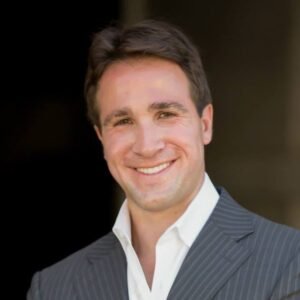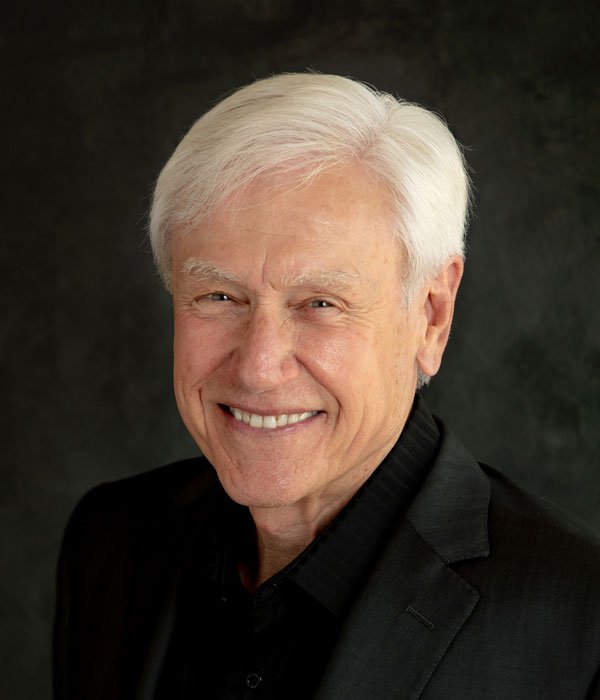I recently went one on one with Michael Signer, the former mayor of Charlottesville, Virginia during the infamous Unite the Right rally and author of the new book CRY HAVOC: Charlottesville and American Democracy Under Siege.
Adam: Thanks again for taking the time to share your journey and best advice. First things first, though, I am sure readers would love to learn more about you. What is something about you that would surprise people?
Michael: I love to cook. With the book tour, one of the things I was going to miss out on was cooking for my family. But now that I’m home all the time and doing it virtually, I’ve had the chance to cook as much as possible. I made homemade pho (Vietnamese beef soup) the other day and it was a smashing success.
Adam: How did you become the Mayor of Charlottesville? Before assuming office, what experiences, failures, setbacks or challenges were most instrumental to your development and growth in your political career and as a leader?
Michael: In Charlottesville, the City Council selects the mayor. I was elected to the City Council in November 2015 and was chosen unanimously as mayor by my colleagues in the first meeting of the new City Council. I had been involved in government, politics and advocacy at many levels previously, from running for Lieutenant Governor to working for the Governor of Virginia to holding a senior role on a presidential campaign to working in the Virginia General Assembly, so I had a wealth of experience to draw on, including failures (like losing my Lieutenant Governor race), but the most important influence was Becoming Madison, a biography I’d written about James Madison’s formative years that was published the year before I became mayor. In the book, I argue that challenging and educating the public is a crucial component of democratic leadership, and I took that advice to heart in my time in public life.
Adam: How would you describe Charlottesville for those who have never been?
Charlottesville is a beautiful, historic, quirky, progressive, friendly, creative city nestled in the Blue Ridge mountains that is famous for being home to the University of Virginia and Thomas Jefferson’s home Monticello, but which is most notable, I believe, for the friendliness and sense of community here. But it’s not all perfect, not by any means—we have been home to generations of systemic racism and today have a high level of entrenched poverty.
Adam: Entrepreneur named Charlottesville the #4 city in America for entrepreneurship while you were mayor. What are the key elements to creating a climate friendly to entrepreneurs?
In a time of so much disruption, I believe cities and countries have choices: do they respond to change by doubling-down on the past or by embracing it? I believe Charlottesville’s economic success and our culture of entrepreneurship stem from being open and enthusiastic about change, whether demographic, cultural, or technological. We have tremendous ethnic and religious diversity, for instance, which is a strength. While we lack traditional employment bases such as single large industries or manufacturing, we have a wealth of hubs focused on innovation, such as online education, biotech, and solar technology, which more than make up the gap. Government can make a difference here. When I was mayor we expanded the technology tax credit we gave to qualified tech businesses. And a strong partnership with the university helps all of this.
Adam: What advice do you have for entrepreneurs on whether they should and how they can cultivate relationships with their local political leaders?
We are all partners and allies in creating successful creative economies. When I was mayor I created a Mayor’s Advisory Council on Innovation and Technology that included dozens of local leaders in companies, capital, and the university. The synergies were amazing and the relationships definitely helped power many initiatives. Just as a company grows through partnerships so too does a company’s role in fostering a better governmental climate for entrepreneurship grow through relationships.
Adam: In your experience, what are the defining qualities of an effective leader? How can leaders and aspiring leaders take their leadership skills to the next level?
Resilience, which to me means leaders need to know how to make the best of challenges and setbacks, which means thinking through even the worst experiences with an eye to mining them for steps forward—whether wisdom, self-knowledge, or new and unforeseen opportunities—while at the same time not being defined by the negative. I’ve seen this in the CEO at the company where I’m general counsel—an upbeat, resilient, creative attitude toward disruption and even disappointment—and I think it creates a great business and culture. As hard as things often were in Charlottesville, it’s the attitude I tried to bring to the months and years after—making the best of a bad situation by focusing on learning and sharing best practices from the trauma and tragedy of Charlottesville.
Adam: Who are the greatest leaders you have been around and what did you learn from them?
One of my closest mentors is Bill Crutchfield, who has been a large and successful consumer electronics company in Virginia based on the “noble purpose” of connecting with their customers as human beings. He is a cheerful, resilient, creative, upbeat leader who in an age when Amazon dominates the electronics world has been a totally different model through the force of creativity and will and listening to his audience. Politically, I have known Pete Buttigieg for many years (I write about advice he gave me before the Unite the Right rally in my book) and endorsed him for President. I was inspired by the joy, creativity, fortitude, and vision he showed in crafting a campaign that outshot most expectations and provided a remarkable example to the world of a young, thoughtful, inspiring leader.
Adam: What is your best advice on building, leading and managing teams?
As the book New Power demonstrates, we live in a world where power is organized and distributed horizontally. Yet as James McGregor Burns illustrates time and again in his classic Leadership, a leader must employ their own life experience, their own intelligence and even weaknesses, as they lead. Strong leaders today need to apply themselves to lead teams and also recognize that leadership in a horizontal time requires humor and humility and sometimes leading from behind and giving more credit to others; but at the same time, the buck needs to stop with the leader. Earning trust from team members in a horizontal world ironically will give the leader more strength to make the tough calls that it’s her job to make, in both good times and bad.
Adam: What are your three best tips applicable to entrepreneurs, executives and civic leaders?
Listen, to your friends and loved ones who have candid advice, and especially to your critics, and even when it’s not something you want to hear or that you think is ridiculous. There are clues to improvement in antagonism. If you’re not able to hear the criticism directly, try and find out about it and understand it.
Good humor and balance. Great leaders can bring a sense of humor, perspective, and balance to the most charged situations, whether things are going great or whether there’s trouble. A light touch, a human connection, a well-placed joke, a sense of humility and perspective can go miles in increasing cohesion and increasing acceptance of tough decisions.
Resilience. Don’t lose your cool in a tough time. Keep perspective. Understand that achieving resilience, not being taken apart or undermined or even destroyed by a challenge, is the victory. Concentrate on strengthening resilience, making your leadership, your team, and your organization more able to withstand challenges. It will pay off in good times and bad.
Adam: What are the best lessons you learned from your time as a Mayor of Charlottesville and specifically from your time leading during the Unite the Right rally?
Never give up. There were many times when I was attacked for calling out right-wing extremism, racism, anti-Semitism, and bigotry, times when they tried to intimidated and silence me. But I refused, drawing strength from others who came before me. I am proudest of the strength I was able to show during those times.
Trust the truth will come out. In Cry Havoc, I describe the metaphor of intermeshed small and large gears. In the confusion and scandal of the moment, particularly frustration about the many failures of policing, there was a lot of scapegoating, including misunderstanding of my role, what we could and could not do, what I had tried to do to protect the city. The small gears of social media move the most quickly but are the least powerful; the large gears of truth move more slowly but are more powerful. I knew there would be time ahead to explain the experts I’d consulted with; the risks we’d taken in the lawsuits that were filed; the personal risk I was exposed to as a leader. Creating an independent investigation was part of that effort to get the complete truth out in the world, both for knowledge and for accountability, as is this new book.
Focus on learning. A lot went wrong in Charlottesville, and a lot went right, too. It was important to me to focus on the good Charlottesville could do—the learning it could provide for a nation struggling to cope with the surge of extremism today. That’s why I started Communities Overcoming Extremism, a bipartisan coalition of leaders and groups dedicated to creating more capacity for this work by studying events like Charlottesville. I am still leading workshops around the country based on our findings, including ones recently in Austin and St. Louis (virtually).
Adam: Cry Havoc is the story of Charlottesville in 2017 and the story of where we are headed. Years from now, how do you believe Charlottesville will be remembered and how will it have impacted America?
I believe Charlottesville will go down as a seminal touchstone in modern American history, an event like Hurricane Katrina or Selma that we will talk about in a hundred years, that will acquire more layers of meaning as time goes on. For instance, Charlottesville was a story about right-wing extremism and domestic terrorism; federal, state, and local government failure; healing and reconciliation; and domestic politics (in both Virginia and, with Joe Biden’s campaign, the national level). I wrote the book in that spirit, both because I had a story to tell from my seat as mayor, and because I have additional lenses, in political science, law, and history, that gave me additional information and insights to share about the meaning of events in the city, given my thesis that Charlottesville was a microcosm for an entire nation under siege by extremism. The book tells the story of what really happened in Charlottesville, including the brushfires in American law, politics and government that combined to create the “perfect firestorm.” At the same time, the book explains what Charlottesville really meant, how it is already leading to significant change in the country, from how courts balance freedom of speech and public safety to the debate over how to handle Confederate monuments.
Adam: Is there anything else you would like to share?
I have twin five year olds boys who were two during the events in the book and who come up frequently in the story. Like anyone with young kids, balancing home and professional concerns was as central to this story as big public policy decisions.









